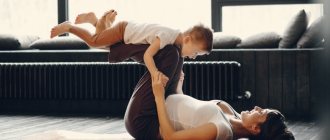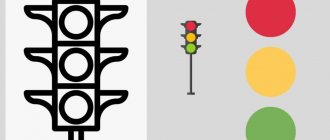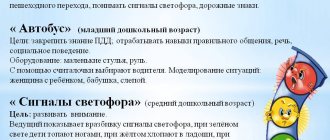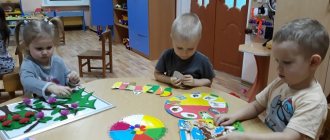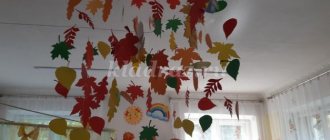Cognitive development of young childrenmaterial on the world around us (younger group)
Cognitive development of young children
(2 – 3 years)
Cognitive development ensures a child’s full life in the surrounding world (nature, society). Formation of ideas, their ordering, understanding of existing patterns, connections and dependencies contributes to further intellectual and personal development.
When implementing the educational field “Cognitive Development”, the following must be taken into account:
— the child’s cognitive capabilities are determined by the level of development of mental processes (perception, thinking, imagination, memory, attention and speech);
— a significant place in the implementation of the field is occupied by various forms of work with children, ensuring the development of cognitive activity and independence, curiosity and initiative of each child;
— the formation of a holistic picture of the world based on the child’s primary ideas and cognitive actions developing is ensured as a result of integration with all educational areas.
The desire to understand the environment permeates all areas of children's activity. A young child is a real explorer. Of great importance for the development of cognitive activity is the desire not only to look at objects, but also to act with them, to connect and separate, to design, to experiment.
Under the influence of objective activity, communication and play, perception, thinking, memory and other cognitive processes develop at an early age. Perception develops most intensively. It forms the center of the child's consciousness. Perception is a fundamental mental function that ensures the child’s orientation in the environment.
The perception of children of this age develops in the process of practical actions. Through trial and error, a child can assemble a pyramid and place an object in a hole of the appropriate shape and size.
He obtains a practical result in the process of repeated comparisons of size, shape, color, selection of identical or suitable objects or their parts. The initial comparison is approximate, quite rough. The child tries it on, tries it, and through mistakes and their correction, achieves the result.
The development of perception is connected with the word. The word denoting an object carries a generalizing meaning, which creates for the child an area for his further development (“Get the toys”, “Where is your locker?”, “Take your jacket”). The child learns words - names to denote size, shape, color and function (rolls, stands). The use of words - names develops and deepens the perception of the various qualities of objects.
In practical activities, the child develops not only perception, but also thinking, which during this period has a visually effective character. Through practical experimentation, the child discovers new means to achieve goals. For example, he gets one object with the help of another: a rolled ball with the help of a stick, stands on a chair to reach the object he likes.
By inventing new means, the child discovers new properties of things. For example, scooping up water using a sieve to sift sand, he discovers that the water is pouring out. This causes surprise in him, which stimulates further experimental actions and new discoveries.
Gradually, towards the end of the third year of life, the child begins to do without external tests, experimenting in his mind.
At this age, imitating actions, figurative toys and substitute objects, illustrations in books, pictures, and his first drawings act as means of designation for the child. The function of the main means of designation and substitution begins to be performed by the word (“I am a caterpillar”, “I am an airplane”, “I am flying”). This is the process of forming an internal plan of thinking, a plan of ideas and the beginning of the development of children's imagination. Thus, in the depths of visually effective thinking, visually imaginative thinking arises, which becomes the main one in preschool age.
The child’s cognitive activity expands, his experience is enriched, manifested in children’s questions (“Is this a bird?”, “Is this a truck?”, “Why?”, “Who is this?”, “What is this?”).
Based on the experience of practical actions with objects and communication with adults, children build their own ideas about the environment.
Children show particular interest in people doing some kind of work and communicating with each other. By the end of the third year, familiarization with the environment acquires a pronounced cognitive character. Children actively seek to obtain information about the world around them by asking adults many questions.
Subject activity (third year of life)
Tasks:
- conduct games - activities using objects - tools, for example, offer to use nets, scoops for fishing balls from special containers with or without water, floating toys, etc.;
- to teach in the process of joint didactic games, as well as in everyday life and on a walk, to highlight the shape, color, size of objects;
- develop coordinated movements of both hands and fine movements of the fingertips;
- encourage actions with objects, when focusing on 2-3 properties at the same time;
- collect single-color and then multi-colored pyramids of 4-5 or more rings, arranging them in decreasing order of size;
- make turrets from three successively smaller parts - inserts (cubes, cones, cylinders, etc.), disassemble and assemble a three-seater matryoshka doll, matching the pattern on its parts;
- consolidate the understanding of words denoting various sizes of objects, their color and shape during the selection of parts according to the specified qualities;
- conduct games - activities with toys that imitate tools, encourage the use of objects - tools in independent play and everyday activities in order for children to solve practical problems in the course of their activities.
Sensory development
Tasks:
- learn to distinguish four colors of the spectrum (red, yellow, blue, green), five geometric shapes (circle, square, rectangle, oval), three figures (cube, ball, prism), three gradations of size (large, smaller, small);
— develop actions to use sensory standards;
- be able to identify color, shape, size in objects;
- distinguish between contrasting and similar states of size (large - smaller - small);
- use the technique of superimposing and applying one object to another to determine their equality or inequality in size and identity in color and shape;
- assemble a pyramid of 3 - 6 rings, a matryoshka from inserts of 1 - 2 sizes;
- group homogeneous objects according to one of three characteristics (size, shape, color) according to a pattern and verbal indication (big, small, like this, not like that), using certain words - names (for example, pre-standard shapes: “brick”, “roof” , “cucumber”, “egg”, etc.).
Getting to know the world around you
Tasks:
- develop humane feelings (a friendly and caring attitude towards all living things);
- introduce the phenomena of social life and some professions (a doctor treats, a driver drives a car, a hairdresser cuts hair, a cook prepares food, a janitor sweeps, etc.);
— continue to form and expand knowledge about the world around us.
The world around us includes knowledge:
— about a person, his external physical characteristics (everyone has a head, arms, legs, face; on the face there are eyes, mouth, nose), his physical and emotional states (hungry - full, tired - rested, sick - cured, sad - rejoiced, cried - laughed);
- activities of people close to the child (mother washes the floor, grandmother knits socks, sister does homework, grandfather reads the newspaper, brother draws, dad repairs the watch, etc.);
- objects, actions with them and their purpose (household items, toys, tools);
- wildlife: flora (trees, herbs, flowers, vegetables, fruits), animal world: domestic animals (cat, dog, cow, horse, goat, pig, cockerel, hen, goose), their young (kitten, puppy , calf, kid, pig, chicken), wild animals (fox, hare, bear, wolf, squirrel), birds (sparrow, crow, dove, etc.);
- inanimate nature: about water in everyday life (pouring, warm - cold, bathing in water, washing with water, washing in water); water in nature (streams run, icicles melt; river, pond);
- natural phenomena: seasons (winter, spring, summer, autumn) and their characteristics (cold in winter, snow; hot in summer, the sun is shining; in spring icicles melt, streams run, leaves bloom; in autumn - wind, cold rain, yellow leaves fall leaves), weather phenomena and people’s attitude towards them (rain is damp, you can’t walk without a raincoat and rubber boots, in the summer when the sun is hot they put on a Panama hat, in the winter it’s cold and people put on fur coats, scarves, warm boots, fur hats, etc.) .
Initial culture of thinking
Tasks:
— to form visually effective thinking, ways to solve practical problems using various tools (blocks, toys, household items);
— develop practical experimentation;
— stimulate and support the search for new ways to solve practical problems;
-develop the symbolic function of thinking in plot-display play.
Construction
Tasks:
Construction from building materials and large construction parts:
- to involve in the creation of simple structures (house, turret, gate, bench, etc.) through adults acting out familiar scenes (matryoshka is walking, dolls are eating, sleeping, resting, cars are driving along the street, driving through the gate) with the involvement of children in this activities.
Paper construction:
- show the first ways of working with paper - crumpling and tearing, help to see an “image” (flower, bun, bird, etc.) in crumpled lumps and torn pieces of paper;
- make simple combinations with the children (for example, children make grass by tearing green paper and placing dandelions, lumps, birds there);
- use panels created by children together with the teacher as decorations for group rooms.
Organization of a subject-spatial developmental environment (in the first junior group) and activities for its development
Center for Cognition (cognitive and research activities)
— geometric planar figures and volumetric shapes (ball, cube, circle, square);
- lotto, dominoes;
— subject and subject pictures, thematic sets of pictures (clothes, shoes, furniture, dishes, vegetables, animals, toys);
- pictures depicting the sequence of events (for example, illustrations for fairy tales);
— illustrations of labor actions, tools necessary in labor;
— illustrations depicting objects used by children in self-service, self-service processes;
- small and large geometric mosaics;
- objects and toys, different in color and size, shape and size;
— three- and four-piece nesting dolls;
- prefabricated - dismountable toys;
- floor pyramid (of 6-7 elements);
- Velcro manuals;
- material for the development of fine motor skills of the hands (beads, laces for stringing, clasps, various types of fasteners, buttons, lacing, zippers);
— sets of cut pictures (2-4 parts);
- boxes or boxes with holes and corresponding inserts of geometric shapes;
- boxes of different sizes, plastic bottles, jars with screw caps;
-mosaic (octagonal, colored, large);
— containers with lids of different sizes and small items of different colors (for sorting small items);
— a box for manipulating sound effects;
— a set of noise boxes;
- “Wonderful bags”;
— games for intellectual and sensory development;
- paired pictures;
- a series of object pictures, compiled according to the principle of the functional use of objects;
— board and printed games of various themes and contents;
-home handyman tools;
— toys (household appliances, dishes, vehicles, etc.);
- “Mysterious” objects (for example, a kaleidoscope, children’s binoculars, a magnifying glass, a watch, a telephone, a coffee grinder), the purpose of which requires certain efforts, leading to the achievement of an effect understandable to the child;
— materials related to the topic of life safety (illustrations, games);
- soft stuffed toys made of different fabrics, filled with various materials (cereals, paper, rags, etc.);
— flannelograph;
Types and content of children's activities.
Activities to form ideas about the clearly distinctive features and properties of various means and materials.
Games are activities aimed at accumulating ideas about color, shape, and size.
Mastering the system of weapon actions, mastering ways of using objects to solve practical problems.
A game for the development of a child’s symbolic function of thinking, activity with objects - substitutes, unformed material.
Activities to familiarize and expand impressions of objects with various properties and possibilities of transformation.
Activities to familiarize yourself with household items and their functional purposes.
Didactic games for sensory education: “Hen and Chicks”, “Lights at Night”, “Leaves of Trees”, “Orange”, “Dandelion and Beetle in the Meadow”, “Christmas Trees and Mushrooms”, “Geese with Goslings”.
Didactic games for FEMP: “Placement of inserts according to shape and size”, “Let’s make beads for a doll”, “Stringing large and small beads”, “Stringing beads of different shapes”.
Theatrical games – situations: “Sunny Bunnies”, “Carousels”.
Water and Sand Center
- a set for experimenting with water: a table - a tray, containers of 2-3 sizes and different shapes, objects - tools for pouring and catching - scoops, nets, floating and sinking toys and objects (sponges, boards, sticks, objects made of rubber, plastic etc.), various molds, pipettes for coloring water);
- a set for experimenting with sand: a table - a sandbox, molds of different configurations, containers of different sizes, objects - tools: scoops, shovels, buckets, toys.
Games - experiments with water: “Let’s find out what kind of water”, “Pour and oh”, “Sinks or floats.”
Game - situation: “Boats are sailing.”
Experimentation Center (mini-laboratories for conducting experiments)
- stones, earth, clay, snow;
— containers for measuring, pouring, research, storage;
— a table with oilcloth, trays, aprons and armbands for a subgroup of children;
- plastic materials, objects interesting for research and observation;
— molds for making colored ice cubes;
- materials for pouring and pouring (empty plastic bottles, cans, beans, peas, pasta);
— tubes for blowing, inserting;
- magic bag;
- soap bubbles, small mirrors, magnets, electric flashlights.
Experimenting with a mirror, a magnet, an electric flashlight (shooting sunbeams, applying a magnet to toys made of various materials, illuminating various objects with a flashlight). Games to establish physical laws, master ideas about volume, shape, changes in substances and knowledge of the properties and capabilities of materials (pouring water from one vessel to another, blowing soap bubbles).
The laboratory for young children contains material for conducting experiments without instruments.
Nature Center
— a didactic doll with a set of clothes according to the seasons;
— equipment for playing with sand while walking (buckets, shovels, molds, scoops, strainers);
— collections of stones, shells, seeds;
— toy library of environmental educational games;
— library of educational natural history literature;
- paintings - landscapes according to the time of year;
— dummies of vegetables and fruits;
— nature (weather) calendar;
— material for developing labor skills (watering cans for watering indoor plants, small wooden shovels for removing snow, plastic buckets);
— illustrations depicting the necessary conditions for the growth and development of plants and animals;
- illustrations of plants in various places of growth (indoor, garden, vegetable garden, flower garden, meadow, forest, park), bushes, trees, herbs;
— illustrations of animals (domestic and wild), birds, fish, insects: butterflies, beetles, flies, mosquitoes, frogs;
— visual and didactic aids “Seasons”, “Native Nature”, “In the Village”, a series of pictures “Forest Inhabitants” (realistic depiction of animals and birds), a series of medium-sized paintings “Animals and their young”.
Didactic games: “What grows in the garden”, “Gegetable shop”, “Who’s at the Christmas tree?”, “Find what I’ll show you”, “Find what I’ll name”, “Guess what’s in your hand”, “Find what I’ll tell you about”, “Whose kids”, “Guess what you ate”.
Games - situations: “In our yard”, “The sun is rising”, “Flower meadow”, “Here is our train coming”, “Icicles are dripping”.
Games - dramatizations: “What grows in the garden bed”, “Leaves in the garden”.
Design Center (constructive activities)
— constructors of different sizes;
- figurines of people and animals for acting out;
- household toys;
- natural and varied multifunctional material: cones, bars, etc.;
- large volumetric geometric shapes;
- building material from boxes of different sizes;
- a floor-standing construction set (large building material made of wood), with large transport toys for playing with it;
- a tabletop construction set (small building material made of wood), with small transport toys and plot figures for playing with it.
Games - situations: “Construction site”, “Ladder for a squirrel”, “Let’s build a house for a bear and a bunny”, “Building a house”;
Games with building materials:
— construction of premises, architectural structures (houses, turrets, garages, fences, sheds);
— construction of communication routes (bridges, railways and highways, tram tracks);
— construction of vehicles (cars, trams, ships, airplanes).
Roles: builder, driver, driver, pilot, captain. Basic game actions (build a bridge - transport goods across it; build a plane - “fly” on it).
Neoplasms of early age
The development of active cognitive activity in children of early and early preschool age is marked by the following changes occurring in the structure of the child’s personality.
- Formation and development of self-awareness . The child begins to gradually separate himself from the world around him. He develops such qualities as independence, curiosity, and interest in the world around him. He is interested in everything that happens around him and what surrounds him in particular.
- Basic trust in the world around you . It develops in the process of the child’s interaction with people around him and the acquisition of his first positive experience.
- Determination . The child learns to direct his activities and structure them to achieve his own goals. Children form an understanding of what specific actions need to be performed to obtain a particular result and make their first attempts to follow one or another instruction. Purposefulness gives the child the opportunity to understand the meaning of cognitive activity and complete what he starts. By the beginning of preschool age, this quality must be formed.
- Creative activity . Gaining experience in interacting with the world around him, the child begins to gradually transform it, manipulating and experimenting with its content. Therefore, it is important to encourage his participation in creative activities in any form.
Features of development of young children
